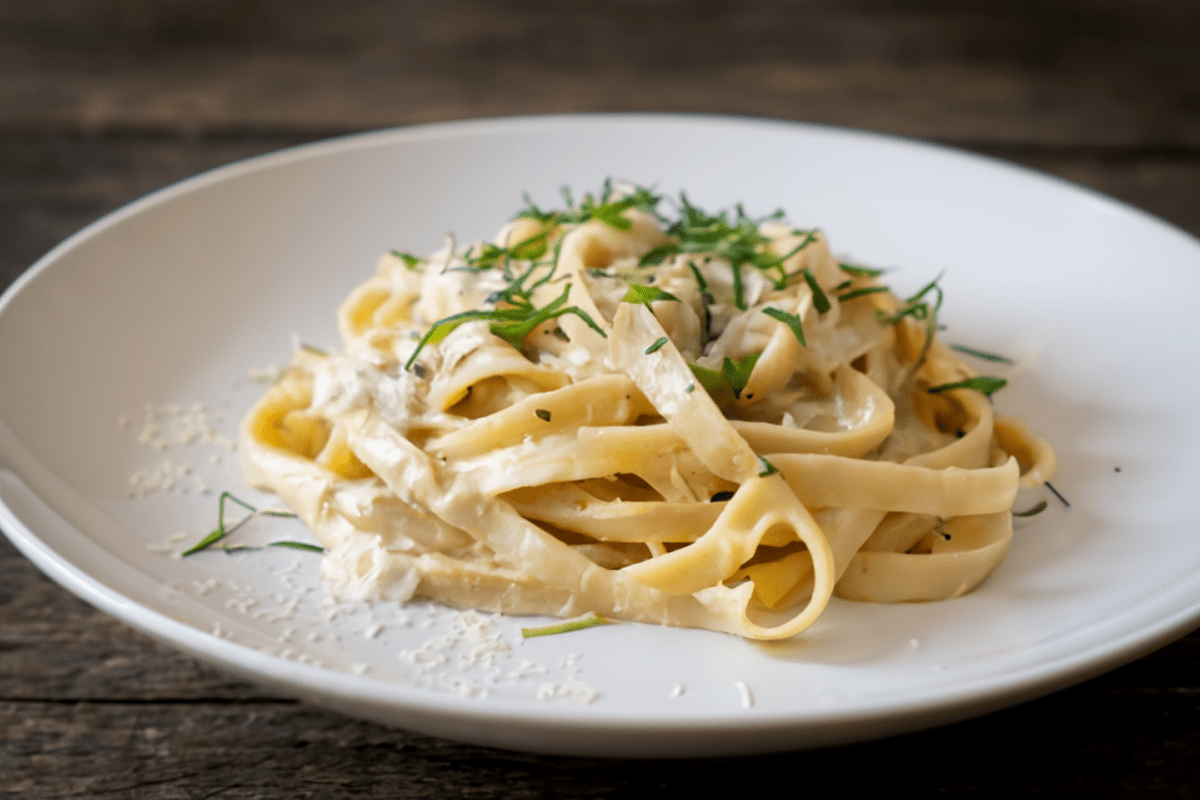Alfredo pasta is a beloved dish that has graced many dinner tables, both in restaurants and at home. Known for its rich, creamy sauce, Alfredo pasta often raises questions about its nutritional value and impact on health. In this article, we will explore whether Alfredo pasta can be considered healthy, examine its nutritional content, and provide tips on how to enjoy this dish without compromising your well-being.
What is Alfredo Pasta?
Alfredo pasta originated in Italy and traditionally consists of just three main ingredients: butter, heavy cream, and Parmesan cheese. While these ingredients create a luscious sauce that coats the pasta beautifully, they also contribute to its high-calorie content. Over time, variations of Alfredo pasta have emerged, often including proteins like chicken or shrimp and additional seasonings to enhance flavor.
For example, one popular variation includes Grilled Chicken Alfredo, which adds a protein boost to the dish.
Nutritional Breakdown of Traditional Alfredo Pasta
When considering whether Alfredo pasta is healthy, it’s essential to look at its nutritional content:
- Calories: A typical serving of Alfredo pasta can range from 600 to 1,200 calories, depending on portion size and ingredients.
- Fat: The traditional recipe is high in fat, with significant amounts of saturated fat due to the butter and cream.
- Carbohydrates: Alfredo pasta is also rich in carbohydrates, primarily from the pasta itself.
- Protein: While the sauce provides some protein from the cheese, adding chicken or shrimp can boost the protein content.
For a detailed breakdown of the nutritional facts, check out the Nutritional Facts for Fettuccine Alfredo on Livestrong.
If you’re interested in a lighter take, you might want to read about the calorie content and health tips for Grilled Chicken Alfredo.
Health Implications of Alfredo Pasta
Given its high calorie and fat content, Alfredo pasta can pose several health risks if consumed frequently:
- Weight Management: The calorie density of Alfredo pasta makes it a poor choice for those trying to lose or maintain weight.
- Sodium and Cholesterol: High sodium and cholesterol levels can contribute to heart disease, especially when consumed in large quantities.
- Digestive Issues: The richness of the sauce may cause digestive discomfort for some individuals, particularly those with lactose intolerance.
However, enjoying Alfredo pasta in moderation or opting for healthier versions can mitigate these risks. For inspiration on creating a healthier version, consider this Healthy Alfredo Sauce Recipe by Show Me The Yummy.
Healthier Alternatives to Traditional Alfredo Pasta
If you love Alfredo pasta but are concerned about its health effects, there are several ways to make this dish healthier:
- Low-Fat Dairy: Substitute heavy cream with low-fat milk, Greek yogurt, or a plant-based alternative to reduce the fat content.
- Vegetables: Incorporate vegetables like spinach, zucchini, or broccoli to add nutrients and fiber while cutting down on calories.
- Whole Grain Pasta: Swap regular pasta for whole grain or legume-based pasta to increase fiber and reduce the glycemic index.
- Healthy Proteins: Choose lean proteins like chicken breast, shrimp, or tofu instead of fatty cuts of meat.
These changes can significantly improve the nutritional profile of Alfredo pasta, making it a more balanced option for regular meals.
How to Make Alfredo Pasta Healthier at Home
Cooking Alfredo pasta at home allows you to control the ingredients and portions. Here are some tips to make a healthier version:
- Reduce Butter: Use olive oil or reduce the amount of butter in the recipe.
- Lighter Sauce: Prepare a lighter sauce by using low-fat milk and thickening it with a small amount of flour or cornstarch.
- Portion Control: Serve smaller portions and pair the pasta with a large salad or steamed vegetables to create a balanced meal.
For a more in-depth guide on how to make healthier pasta dishes, check out related recipes like Grilled Chicken Alfredo on JamesRecipes.com.
FAQs About Alfredo Pasta
Here are some common questions people have about Alfredo pasta:
Is Alfredo Pasta Good for Weight Loss?
Alfredo pasta is generally not recommended for weight loss due to its high-calorie content. However, by making healthier substitutions and practicing portion control, you can include it occasionally in a weight-loss diet.
Can Alfredo Pasta Be Part of a Balanced Diet?
Yes, Alfredo pasta can be part of a balanced diet if consumed in moderation and paired with other nutrient-dense foods like vegetables and lean proteins.
What Are the Best Low-Calorie Substitutes for Alfredo Sauce?
Low-calorie substitutes for Alfredo sauce include sauces made with Greek yogurt, cauliflower, or cashew cream, all of which provide a creamy texture without the high-calorie count.
Is Alfredo Pasta Healthy for Kids?
While Alfredo pasta can be a tasty treat for kids, it’s important to serve it in small portions and balance it with plenty of vegetables to ensure they get the nutrients they need.
How Often Can I Eat Alfredo Pasta Without Impacting My Health?
It’s best to enjoy Alfredo pasta occasionally rather than as a regular part of your diet, especially if you are watching your weight or have health concerns related to fat and cholesterol intake.
Conclusion
Alfredo pasta is a rich and satisfying dish, but its traditional version can be high in calories, fat, and sodium. By making simple substitutions and focusing on portion control, you can enjoy this classic dish without compromising your health. Remember, moderation is key, and there are plenty of ways to make Alfredo pasta a healthier option for you and your family.
For more delicious recipes and tips, don’t forget to explore other related content on JamesRecipes.com.

